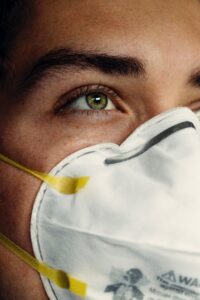Questions? Get a Quick Response
Questions? Get a Quick Response
 Very few people like mandates, but there are many that make sense. For instance, restaurants are required to meet certain standards of cleanliness and sanitation to stay open and functioning. Commercial airline flight crews have to demonstrate proficiency in their ability to fly passenger-carrying aircraft by earning an Airline Transport Pilot rating and a First-Class Medical certificate. Healthcare professionals must be certified and licensed in their field in order to be able to practice.
Very few people like mandates, but there are many that make sense. For instance, restaurants are required to meet certain standards of cleanliness and sanitation to stay open and functioning. Commercial airline flight crews have to demonstrate proficiency in their ability to fly passenger-carrying aircraft by earning an Airline Transport Pilot rating and a First-Class Medical certificate. Healthcare professionals must be certified and licensed in their field in order to be able to practice.
Anyone out there want to eat at a disreputable restaurant, fly with an untrained pilot, or be operated on by an unlicensed doctor? Not likely.
We tend to take these things for granted, but in reality, these protections exist because they are mandated.
The common misconception about respirators (including and especially N95 disposable respirators) is that if someone wears a respirator, he or she is protected from whatever toxic or infectious agents are in the ambient atmosphere in which the person is working. While this may be true, the only way to be sure the wearer is protected is to know that the correct filtration is employed and that the respirator fits!
OSHA has mandated in 29 CFR 1910.134 that whenever a respirator is required to be used to protect an employee (and there are some very specific requirements in the regulation), the respirator must be fit tested to ensure that it actually fits the employee sufficiently well to achieve a minimum protection( fit) factor.
Fluid dynamics tells us that a fluid (like air) will flow through the path of least resistance. If the respirator does not seamlessly fit the face of the wearer, a very large part of the air entering the breathing zone will have done so by bypassing the filtration and entering past the margins of the respirator, most likely through gaps around the edges. Toxic vapors, infectious aerosols, and particulates will be carried into the breathing zone along with this air flow. The only way to be sure that this does not occur is to rigorously test the fit of the respirator, and the only way to unambiguously do so is by using a Quantitative Fit Test.
Wearing a respirator that doesn’t fit is dangerous. This is obvious, but even worse, it can create a false sense of security on the part of the wearer. He or she may then take risks they might not otherwise have taken while wearing improperly fitted pieces of personal protective equipment.
A Quantitative Fit Test (QNFT) such as is produced by the AccuFIT 9000 series of instruments does not depend on the ability of the test subject to detect a challenge agent such as saccharine. QNFT is completely objective and produces a defensible metric that can be referred to by the employer and test subject as proof that the respirator fits and will do the job it was designed to do.
As we said, few people like mandates, but this one, Respirator Fit Testing, saves lives, so we vote Yea!

Customer Service
info@accutec.com
(866) 393-2405 toll-free
Global Distribution & Service Center
201 S. Miami Ave
Cleves, OH 45002
Get the Latest News from AccuTec Right in Your Inbox.